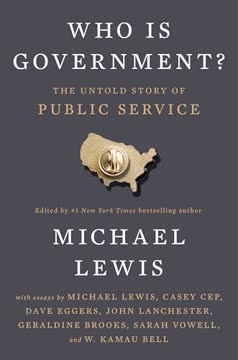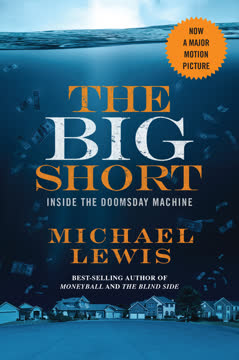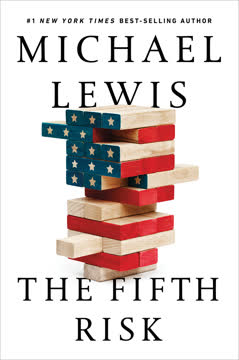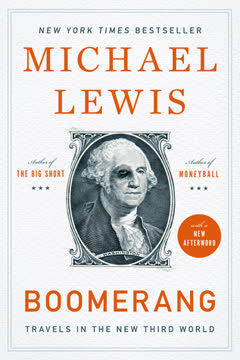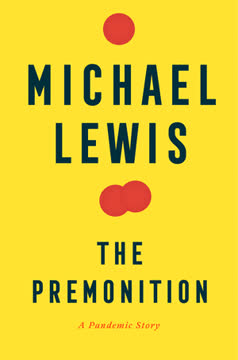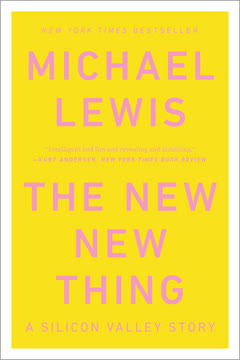Key Takeaways
1. Government Service: A Noble Calling Often Overlooked
Let the public service be a proud and lively career.
Undervalued Contribution. Government employees often perform critical work that goes unnoticed and unappreciated by the public. This lack of recognition can discourage talented individuals from pursuing careers in public service.
- Examples include preserving rural America, managing nuclear weapons, and improving weather prediction.
- The stereotype of the lazy, inefficient bureaucrat persists, overshadowing the dedication and expertise of many civil servants.
Existential Threat. The institution of government faces a new existential threat, as elected officials often neglect or undermine the work of civil servants. This neglect can lead to a decline in the quality of public services and a loss of valuable expertise.
- The Trump administration's dismissal of transition teams and lack of understanding of government functions highlighted this threat.
- The media often focuses on political drama rather than the essential work of government agencies.
Call to Action. There is a need to subvert the stereotype of the civil servant and recognize the value of their contributions. By highlighting the achievements and dedication of government employees, we can encourage more talented individuals to pursue careers in public service.
- The book aims to showcase the civic-minded individuals who are committed to serving the public good.
- It encourages readers to question their own assumptions about government workers and to appreciate the importance of their work.
2. The Power of Individual Dedication in Public Service
There’s no culture of recognition in government.
Unsung Heroes. Many civil servants dedicate their careers to solving narrow, difficult problems that are critical to the well-being of the country and its citizens. These individuals often work without seeking recognition or praise, driven by a sense of duty and a desire to make a difference.
- Christopher Mark, a former coal miner, developed industry-wide standards to prevent roof falls in underground mines, leading to the first year with no roof fall fatalities in the United States.
- Ronald E. Walters, who leads the National Cemetery Administration, has spent decades obsessing over every detail to ensure that veterans and their families receive the highest quality of service.
Personal Connection. Often, these individuals have a personal connection to the problems they are trying to solve, which fuels their dedication and commitment. This personal stake can lead to innovative solutions and a deep understanding of the challenges involved.
- Mark's experience in coal mines motivated him to improve safety standards.
- Walters's family history of military service inspired his commitment to honoring veterans.
Overcoming Obstacles. Despite facing challenges such as limited resources, bureaucratic hurdles, and lack of recognition, these individuals persevere in their efforts to serve the public good. Their dedication and resilience are a testament to the power of individual initiative in government service.
- Mark navigated a complex regulatory landscape and overcame resistance from the coal mining industry to implement his safety standards.
- Walters transformed the National Cemetery Administration into one of the highest-rated organizations in the country, despite facing budget cuts and staffing shortages.
3. Bureaucracy Can Be a Force for Good
What the government job gave me was the freedom to do these things.
Challenging Stereotypes. The stereotype of bureaucracy as inefficient and ineffective is often inaccurate. In many cases, government agencies provide essential services and solve complex problems that the private sector is unable or unwilling to address.
- The National Weather Service provides life-saving weather forecasts that are critical for public safety.
- The Agriculture Department works to preserve rural America and reduce food waste.
Unique Capabilities. Government agencies often possess unique capabilities and resources that allow them to tackle challenges that are beyond the scope of individual companies or organizations. These capabilities include:
- Access to vast amounts of data and expertise
- The authority to regulate industries and enforce standards
- The ability to coordinate efforts across multiple sectors
Public Good. By focusing on the public good rather than private profit, government agencies can address societal needs that are often neglected by the market. This can lead to a more equitable and just society for all citizens.
- The Mine Safety and Health Administration works to protect coal miners from injury and death.
- The Environmental Protection Agency works to protect the environment and public health.
4. The Importance of Data-Driven Decision Making
All I’m doing is taking trial and error and looking at the data more scientifically.
Evidence-Based Solutions. Many government agencies rely on data and statistical analysis to inform their decisions and develop effective solutions to complex problems. This approach allows them to identify patterns, track progress, and make adjustments as needed.
- Christopher Mark used statistical analysis to identify the causes of roof falls in coal mines and develop better pillar designs.
- The National Cemetery Administration uses customer satisfaction data to identify areas for improvement and enhance the services it provides to veterans and their families.
Overcoming Uncertainty. Data analysis can help government agencies make better decisions in the face of uncertainty and complexity. By collecting and analyzing data, they can reduce the risk of making mistakes and increase the likelihood of achieving their goals.
- Mark used statistical methods to account for the variability of rock formations in coal mines and develop safety standards that could be applied across different geological conditions.
- Walters used data on veteran demographics and service gaps to determine where to open new cemeteries and expand existing ones.
Continuous Improvement. Data-driven decision making is an ongoing process that requires continuous monitoring and evaluation. By tracking key metrics and soliciting feedback from stakeholders, government agencies can identify areas for improvement and adapt to changing circumstances.
- The National Cemetery Administration regularly reviews its operating standards and measures to ensure that they are meeting the needs of veterans and their families.
- Mark continues to analyze accident data to identify new ways to improve safety in coal mines.
5. The Human Element in Government Work
There is no place where the price of freedom is more visible than in a national cemetery.
Compassion and Empathy. Government employees often work with people during some of the most difficult times in their lives, requiring compassion, empathy, and a commitment to serving their needs. This human element is often overlooked in discussions of government efficiency and effectiveness.
- Ronald E. Walters and his colleagues at the National Cemetery Administration provide comfort and support to veterans and their families during times of grief.
- Christopher Mark dedicated his career to protecting coal miners from injury and death, driven by a deep sense of fairness and a desire to help the unlucky.
Personal Stories. The stories of individual government employees can provide a powerful reminder of the human impact of their work. By highlighting these stories, we can challenge stereotypes and foster a greater appreciation for the contributions of civil servants.
- The story of the technician at Mountain Home National Cemetery who gave up his boots to help a woman reach her grandfather's grave illustrates the dedication and compassion of government employees.
- The story of Francisco Zappas, a homeless veteran who found meaning and purpose in tending to the graves of his fellow veterans, demonstrates the transformative power of government programs.
Building Trust. By treating people with respect and dignity, government employees can build trust and foster a sense of community. This trust is essential for effective governance and for ensuring that government services are accessible to all.
- Walters's serene and easygoing demeanor and his genuine concern for the well-being of his subordinates have earned him the respect and admiration of his colleagues.
- Mark's willingness to listen to the concerns of coal miners and to incorporate their feedback into his safety standards has helped to build trust between the government and the industry.
6. The Interconnectedness of Government Agencies
Technology transfer has always been central to what I do.
Collaboration and Coordination. Government agencies often work together to address complex problems that require a coordinated response. This collaboration can lead to more effective solutions and a more efficient use of resources.
- The IRS, DEA, FBI, and other agencies collaborated to shut down Silk Road and prosecute its creator.
- The National Archives partners with Wikipedia, FamilySearch, and Ancestry to digitize records and make them more accessible to the public.
Sharing Expertise. Government agencies can benefit from sharing their expertise and best practices with one another. This can lead to improvements in efficiency, effectiveness, and customer service.
- The National Cemetery Administration provides training for employees of Arlington National Cemetery.
- Christopher Mark shared his knowledge of coal mine safety with mining engineers across the United States.
Breaking Down Silos. By breaking down silos and fostering communication across agencies, the government can create a more integrated and responsive system of public service. This requires a commitment to collaboration, transparency, and a shared sense of purpose.
- Pamela Wright's role as Chief Innovation Officer is to foster a culture of innovation across the National Archives and to encourage collaboration with other agencies and organizations.
- The creation of History Hub, a platform for government employees and citizen volunteers to share their knowledge and expertise, is an example of this effort.
7. The Challenge of Maintaining Excellence in Public Service
We only get one chance to get it right.
High Standards. Maintaining excellence in public service requires a commitment to high standards, continuous improvement, and a focus on customer satisfaction. This can be challenging in an environment of limited resources, bureaucratic hurdles, and political pressures.
- Ronald E. Walters believes that the National Cemetery Administration owes those it serves a perfect score and has spent decades obsessing over every detail to ensure that it meets this standard.
- Christopher Mark was driven by a desire to keep miners safe and refused to compromise on safety standards, even when it meant challenging industry practices.
Adapting to Change. Government agencies must be able to adapt to changing circumstances and emerging challenges. This requires a willingness to embrace new technologies, experiment with new approaches, and learn from mistakes.
- The IRS is undergoing a major tech-enabled transformation to modernize its systems and improve customer service.
- The National Archives is digitizing its records and developing new ways to make them accessible to the public.
Protecting Against Complacency. Complacency is one of the greatest dangers to a great organization. To avoid complacency, government agencies must foster a culture of innovation, encourage employee engagement, and remain focused on their mission.
- Walters is a born innovator who is constantly looking for ways to improve the services that the National Cemetery Administration provides.
- Mark continued to analyze accident data and develop new safety standards throughout his career.
8. The Importance of Innovation in Government
Innovation is often about figuring out how to use what you have to accomplish something that’s never been done before.
Solving Problems. Innovation is essential for government agencies to solve complex problems and meet the evolving needs of the public. This requires a willingness to experiment with new approaches, embrace new technologies, and challenge conventional wisdom.
- Christopher Mark developed new methods for rating coal mine roofs and preventing roof falls, despite the lack of existing scientific knowledge.
- Pamela Wright created the Citizen Archivist program to enlist volunteers' help in digitizing records and making them more accessible to the public.
Improving Efficiency. Innovation can also lead to greater efficiency and cost savings in government operations. By streamlining processes, automating tasks, and leveraging technology, agencies can reduce waste and improve their overall performance.
- The IRS is undergoing a major tech-enabled transformation to modernize its systems and improve customer service.
- The National Cemetery Administration has implemented new technologies and processes to improve its efficiency and reduce costs.
Fostering a Culture of Innovation. To foster innovation, government agencies must create a culture that encourages creativity, risk-taking, and collaboration. This requires empowering employees to share their ideas, providing them with the resources they need to experiment, and celebrating their successes.
- Wright has worked to ignite a culture of innovation across the National Archives, nurturing new ideas and incorporating emerging technologies.
- The Partnership for Public Service recognizes and rewards innovative government employees through the Sammies awards.
9. The Tension Between Politics and Public Service
There’s no Republican or Democratic way to bury a veteran.
Nonpartisanship. Government agencies are often caught in the crossfire of political battles, which can undermine their ability to serve the public effectively. Maintaining nonpartisanship is essential for ensuring that government services are delivered fairly and equitably to all citizens.
- Ronald E. Walters has served through seven administrations and earned admiration from both parties because his decisions are not rooted in politics.
- The National Cemetery Administration provides the same ceremonies and markers to every veteran, regardless of rank or station.
Political Interference. Political interference can undermine the integrity and effectiveness of government agencies. This can take many forms, including:
- Budget cuts that limit the agency's ability to perform its mission
- Political appointments that prioritize loyalty over expertise
- Attempts to influence agency decisions for political gain
Protecting Independence. To protect their independence, government agencies must resist political pressure and remain focused on their mission. This requires strong leadership, a commitment to transparency, and a willingness to stand up for what is right.
- The IRS has a long history of resisting political interference and protecting the confidentiality of taxpayer information.
- The National Archives is responsible for preserving and protecting the records of the U.S. government, regardless of their political content.
10. The Enduring Value of Public Servants
Taxes are what we pay for a civilized society.
Essential Role. Public servants play an essential role in maintaining a civilized society. They provide essential services, protect the public good, and uphold the rule of law. Their work is often difficult, demanding, and underappreciated, but it is vital to the well-being of the country.
- Government employees provide essential services such as education, health care, and infrastructure.
- They protect the public good by enforcing environmental regulations, ensuring food safety, and preventing crime.
Dedication and Sacrifice. Many public servants are driven by a deep sense of duty and a willingness to sacrifice their own interests for the good of the country. They are often willing to work long hours, accept lower pay, and face personal risks to serve the public.
- Christopher Mark dedicated his career to protecting coal miners from injury and death, despite the challenges and risks involved.
- Ronald E. Walters has spent decades obsessing over every detail to ensure that veterans and their families receive the highest quality of service.
Preserving Democracy. By upholding the rule of law, protecting individual rights, and promoting transparency and accountability, public servants play a critical role in preserving democracy. Their work is essential for ensuring that the government remains responsive to the needs of the people and that all citizens have a voice in shaping their future.
- The National Archives preserves and protects the records of the U.S. government, ensuring that future generations have access to the information they need to understand their history and hold their leaders accountable.
- The IRS enforces the tax laws, ensuring that everyone pays their fair share and that the government has the resources it needs to function effectively.
Last updated:
FAQ
What’s "Who Is Government?: The Untold Story of Public Service" by Michael Lewis about?
- Profiles of Unsung Civil Servants: The book is a collection of narrative essays profiling federal employees whose work is critical but often invisible, showing how public servants shape and safeguard American life.
- Behind-the-Scenes Government Work: It explores the inner workings of various federal agencies, from the Department of Labor to NASA, the IRS, and the National Archives, revealing the complexity and importance of their missions.
- Challenging Stereotypes: Lewis and other contributors aim to subvert the negative stereotype of the government bureaucrat, highlighting dedication, innovation, and the real-world impact of civil service.
- Journalistic Collaboration: The book features essays by Michael Lewis and six other acclaimed writers, each focusing on a different agency or public servant, originally published in The Washington Post.
Why should I read "Who Is Government?: The Untold Story of Public Service" by Michael Lewis?
- Fresh Perspective on Government: The book offers a rare, humanizing look at the people who keep the government running, moving beyond politics to focus on public service.
- Inspiring True Stories: Readers encounter stories of ingenuity, sacrifice, and problem-solving that have saved lives, improved systems, and protected democracy.
- Timely and Relevant: In an era of political polarization and skepticism about government, the book provides a nuanced, hopeful, and sometimes sobering account of what’s at stake.
- Engaging Storytelling: With contributions from top writers, the book is both informative and entertaining, making complex government functions accessible and compelling.
What are the key takeaways from "Who Is Government?: The Untold Story of Public Service"?
- Civil Servants Matter Deeply: The effectiveness and safety of American society often depend on the quiet, persistent work of career public servants.
- Government Is More Than Politics: The book distinguishes between the often-theatrical world of elected officials and the essential, less-visible work of the bureaucracy.
- Recognition Gap: Extraordinary achievements by civil servants frequently go unnoticed, while mistakes are highly publicized, creating a culture with little incentive for innovation.
- Threats to Public Service: Underfunding, political interference, and public mistrust threaten the ability of government agencies to fulfill their missions.
How does Michael Lewis, in "Who Is Government?", challenge the stereotype of the government worker?
- Showcasing Dedication and Expertise: The book profiles individuals who are passionate, highly skilled, and deeply committed to public good, countering the image of lazy or indifferent bureaucrats.
- Highlighting Innovation: Stories reveal how civil servants solve complex, sometimes life-or-death problems, often with limited resources and little recognition.
- Emphasizing Humility and Teamwork: Many featured employees are reluctant to take credit, focusing instead on collective achievement and mission.
- Addressing Systemic Barriers: Lewis discusses how government culture and media narratives contribute to the persistence of negative stereotypes.
What are some of the most compelling stories or profiles in "Who Is Government?" by Michael Lewis?
- Christopher Mark, Department of Labor: Developed standards that led to the first year with no roof fall fatalities in U.S. underground coal mines, drawing on both technical expertise and personal experience.
- Ronald E. Walters, National Cemetery Administration: Raised the agency to the highest customer satisfaction ratings in the country, ensuring dignity and equality in veterans’ burials.
- Vanessa Bailey and the NASA JPL Team: Work on the Roman Space Telescope and the search for exoplanets, illustrating the collaborative, global nature of scientific discovery in government.
- Jarod Koopman, IRS Criminal Investigation: Led cybercrime teams that have disrupted terrorist financing and child exploitation networks, showing the IRS’s unexpected role in global security.
How does "Who Is Government?" by Michael Lewis explain the importance of government data and statistics, such as the Consumer Price Index?
- Foundation of Democracy: The book argues that data collection and analysis are central to the Enlightenment ideals underpinning American democracy.
- Complexity and Controversy: It details the painstaking process behind statistics like the CPI, showing how they are constructed, debated, and sometimes misunderstood.
- Impact on Daily Life: These numbers influence everything from Social Security payments to political fortunes, affecting millions of Americans.
- Challenges in Communication: The book explores the disconnect between statistical reality and public perception, especially in times of economic anxiety.
What is the "CURE ID" project described in "Who Is Government?" and why is it significant?
- FDA’s Rare Disease Tool: CURE ID is an app and website created by Heather Stone at the FDA to collect and share case reports on rare diseases and off-label drug use.
- Bridging Knowledge Gaps: It aims to make anecdotal but potentially lifesaving information accessible to doctors worldwide, especially for conditions with no established treatments.
- Barriers to Adoption: Despite its promise, the project faces challenges from institutional inertia, lack of incentives, and skepticism about non-traditional evidence.
- Real-World Impact: The story of a child surviving a deadly amoeba infection thanks to information shared through CURE ID illustrates its potential to save lives.
How does "Who Is Government?" by Michael Lewis address the challenges and threats facing the U.S. civil service today?
- Political Interference: The book discusses efforts to politicize or dismantle the professional civil service, such as proposals to fire large numbers of federal employees.
- Resource Constraints: Chronic underfunding and hiring freezes have left agencies understaffed and struggling to modernize.
- Public Mistrust: Negative stereotypes and political rhetoric undermine morale and make it harder to attract and retain talent.
- Need for Renewal: The book highlights the importance of recruiting young, diverse, and mission-driven people to sustain effective government.
What role do recognition and awards, like the Sammies, play in "Who Is Government?" by Michael Lewis?
- Culture of Recognition: The Sammies (Samuel J. Heyman Service to America Medals) were created to spotlight extraordinary federal employees and encourage a culture of excellence.
- Reluctance to Self-Promote: Many civil servants are uncomfortable with attention, making it hard to surface their stories and achievements.
- Incentivizing Innovation: Recognition can motivate employees to go above and beyond, but the book notes that the government still struggles to celebrate its best people.
- Public Awareness: By telling these stories, the book aims to bridge the gap between government work and public understanding.
What are some of the best quotes from "Who Is Government?" by Michael Lewis and what do they mean?
- JFK Epigraph: “Let the public service be a proud and lively career…”—underscores the book’s central theme of pride and honor in serving the nation.
- On Stereotypes: “The typecasting has always been lazy and stupid, but increasingly, it’s deadly.”—Lewis warns that dismissing civil servants can have real, harmful consequences.
- On Data: “The CPI is an impossible number…And yet, it has to be done because otherwise your society is, in economic terms, flying blind.”—Emphasizes the necessity and difficulty of government statistics.
- On Service: “The best thing in the world is when no one can remember whose idea it was. Then you know you’ve succeeded because the greatest thing that can happen is no one can remember who did it or how it was done; everybody has taken a piece of the idea, and it’s been institutionalized.”—Reflects the humility and collective ethos of effective public service.
How does "Who Is Government?" by Michael Lewis illustrate the impact of government work on ordinary Americans?
- Life-and-Death Consequences: Stories like the prevention of coal mine deaths and the rescue of children from cybercrime show direct, tangible benefits.
- Everyday Services: The book highlights how government touches daily life, from safe food and medicine to veterans’ burials and weather forecasts.
- Invisible Infrastructure: Much of what keeps society functioning—data, safety standards, public records—depends on the often-unseen work of civil servants.
- Ripple Effects: Innovations and interventions by public servants can have far-reaching effects, improving systems and saving resources for generations.
What advice or lessons does "Who Is Government?" by Michael Lewis offer for those considering a career in public service?
- Mission Over Money: Many profiled employees choose public service despite higher-paying private sector options, motivated by a sense of purpose.
- Room for Impact: The government offers unique opportunities to solve big, meaningful problems and serve the public good.
- Need for New Talent: The book stresses the importance of attracting young, diverse, and passionate people to renew and strengthen the civil service.
- Resilience and Adaptability: Success in government often requires patience, creativity, and the ability to navigate bureaucracy and resource constraints.
Review Summary
Who Is Government? receives praise for highlighting dedicated civil servants across various agencies. Readers appreciate the book's timely relevance, diverse perspectives from multiple authors, and insights into often-overlooked government work. Many find it eye-opening and inspiring, noting how it challenges negative stereotypes about bureaucrats. Some criticize the selection bias in featuring exceptional cases. Overall, reviewers commend the book for humanizing government employees and showcasing their important contributions, with several calling it essential reading for understanding the value of public service.
Download PDF
Download EPUB
.epub digital book format is ideal for reading ebooks on phones, tablets, and e-readers.
